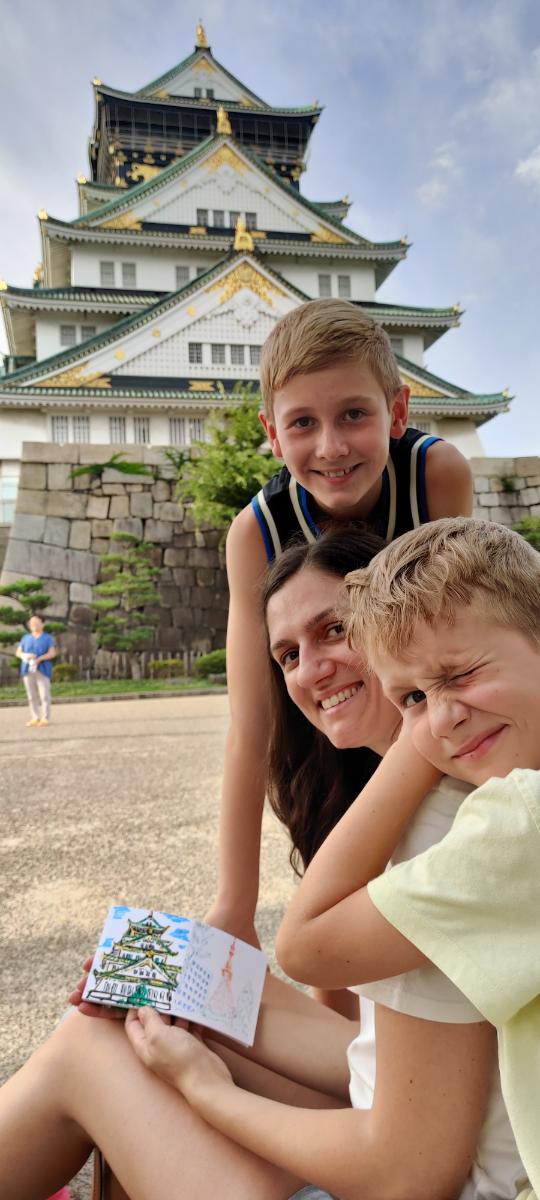From the neon buzz of Tokyo to the ancient temples of Kyoto, and from serene forest shrines in Nikko to the rustic charm of Kurashiki, our journey through Japan was more than just a trip—it was a tapestry of culture, flavour, and unforgettable moments.

🏙Tokyo: Where Tradition Meets Tomorrow:
Tokyo awakened us with its electric energy. Between darting through Shibuya Crossing, smelling incense in tiny alley shrines, and finding peace in the Meiji Shrine gardens, we saw the beautiful contrast of old and new.
Must-do in Tokyo (2025 updates):
Try seasonal foods: spring cherry blossoms, summer matsuri (festivals), autumn moon-viewing treats.
Use Suica or Pasmo IC cards — these now work even more seamlessly across many regional transport apps and via Apple Pay.
Explore off-beat neighbourhoods (Shimokitazawa, Kichijoji) to escape the crowds.

🌲 Nikko: Whispers of Nature & Sacred Shrines:
Escaping the city brought us into lush forested hills of Nikko. The Tōshōgū Shrine, with its ornate carvings and vivid architecture, stood like a portal to a different era. Early morning mist, fewer visitors, and birdsong made it magical.

🏯 Osaka: Food, Fun & So Much Flavor:
They say Osaka is the “kitchen of Japan”—and rightly so. We feasted in Dotonbori, slurped takoyaki, devoured kushikatsu, and took in the brightness of neon signage. On quieter nights, we visited Osaka Castle and saw panoramic views from its top, thinking how seamlessly history and modern life coexist here.

🦌 Nara: Gentle Deer and Ancient Wisdom:
Nara felt like walking inside a scroll painting. Deer roam free in large parks, temples like Todai-ji house the Great Buddha, and every path echoes with silence and reverence. We learned that “nature as teacher” isn’t just a metaphor here—it’s lived in the rustling leaves and temple bell chimes.

🍵 Uji: Where Tea Culture Breathes:
Uji, just south of Kyoto, is a green tea lover’s dream. We sat in traditional tea houses, watched tea masters whisk matcha with precision, and walked beside the Uji River. The Byōdō-in Temple, a UNESCO site, glows at sunrise. If you love quiet beauty and sensory meditation, Uji is essential.

🎎 Kyoto: Postcard Perfect in Every Direction:
Kyoto is Japan’s heart of tradition. The vermilion gates of Fushimi Inari, the ethereal bamboo forest in Arashiyama, geisha sightings in Gion at dusk, and the smell of incense at Kiyomizu-dera—all of it feels like stepping into a living painting. We recommend staying in a ryokan at least one night for that tatami-floor, futon, hot spring experience.

🏞 Kurashiki: Quiet Canals & Artistic Whispers:
Kurashiki’s Bikan Historical Quarter felt like a balm after the buzz of cities. We wandered along quiet canals, watched reflections of old white-washed warehouses, and admired art at the Ohara Museum. For those wanting to slow down, this is the place to breathe.

🌿 Practical Tips & Travel Updates for 2025
- When to Visit: Spring (late March-April) for sakura, or autumn (October-November) for fall foliage. These have the best weather and colors. Avoid Golden Week (late April-early May), Obon (mid-August), and New Year if you dislike crowds and high prices.
- Booking: Plan accommodations, internal travel (Shinkansen, buses, etc.), and special experiences (tea ceremony, ryokan stays) at least 3–6 months ahead to get availability and better prices.
- Transport & Passes: The JR Pass is still useful, especially if traveling between several regions. Combine with regional passes or IC cards (Suica/Pasmo) for city transport.
- Language: English signage is good in major cities, but in rural or smaller towns less so. Learning basic Japanese phrases (hello, thank you, excuse me) goes far.
- Money & Payments: Cash is still king in many smaller shops and temples. ATMs may not accept foreign cards everywhere—7-Eleven / post office ATMs are more reliable.
- Respect & Etiquette: Remove shoes at entrances, be quiet in sacred spaces, don’t tip (it’s not customary), bow slightly, and avoid eating while walking in public.
🧭 Local Culture, Traditions & Hidden Stories
Japan is a land of wa (harmony), where every tradition—from lap bathing in onsens to tea ceremonies—is threaded with centuries-old meanings. We saw this in the way hosts in ryokan pause after service; in the precise rituals in temples; and in seasonal festivals like Tsukimi (moon-viewing) in autumn.
Fun fact about Japan: Many people don’t know this—“hanami” (flower-viewing) isn’t just about cherry blossoms. In Hokkaido and northern regions, plum blossoms and wisteria also draw crowds later in spring. And at night, “yozakura” (night cherry blossom viewing) create dreamlike illuminated paths lined with lanterns. 🇯🇵✨
Top FAQs about out trip to Japan:
- What is the best time of year to visit Japan for avoiding crowds?
Answer: Autumn (mid-October to early December) and spring (late March-early April) offer beautiful scenery with fewer crowds. Avoid Golden Week (late April), Obon (mid-August), and New Year holidays if possible. - Do I need a JR Pass, or are there alternatives?
Answer: If you’re traveling between multiple regions (e.g. Tokyo → Kyoto → Osaka), the JR Pass often saves money. For city or day-trips, use local/IC cards (Suica, Pasmo) and regional train passes. - Is Japan expensive to travel?
Answer: It depends. Major cities are more expensive (accommodation, meals). Using mid-range hotels, eating at local restaurants or street food, using public transport and booking ahead can keep costs manageable. - What should I pack when visiting Japan?
Answer: Comfortable walking shoes, layers (weather changes), small umbrella, power adapter, basic Japanese phrases guide, cash plus credit card, medication. If visiting in winter or hiking, include warm clothing. - How respectful are Japanese customs, and what etiquette should travelers follow?
Answer: Very respectful. Key etiquette: remove shoes in certain places, be quiet in temples/shrines, don’t tip, avoid eating while walking, use trays for payments, watch how chopsticks are used. - Is English widely spoken in Japan?
Answer: In big cities, major tourist spots, hotels and signage, yes to some degree. In rural areas or small towns, less so—having a phrasebook or translation app helps. - How many days do I need to see Tokyo, Kyoto & some smaller towns?
Answer: A 10- to 14-day itinerary works well: ~3-4 days in Tokyo, ~2-3 in Kyoto, 1-2 each for Nara, Nikko, Kurashiki (or other smaller towns), plus travel time.
